Ecosystem: Difference between revisions
m Please use the talk page. (HG) |
Tag: references removed |
||
| Line 8: | Line 8: | ||
[[Image:River gambia Niokolokoba National Park.gif|thumb|[[Rainforest]]s often have a great deal of [[biodiversity]] with many [[plant]] and [[animal]] [[species]]. This is the [[Gambia River]] in [[Senegal]]'s [[Niokolo-Koba National Park]].]] |
[[Image:River gambia Niokolokoba National Park.gif|thumb|[[Rainforest]]s often have a great deal of [[biodiversity]] with many [[plant]] and [[animal]] [[species]]. This is the [[Gambia River]] in [[Senegal]]'s [[Niokolo-Koba National Park]].]] |
||
Tms: An Introduction to Physical Geography''. Prentice Hall Inc.</ref> |
|||
The entire array of organisms inhabiting a particular ecosystem is called a [[Community_(ecology)|community]].<ref name=BiologyConcepts&Connections/> In a typical ecosystem, [[plant]]s and other [[Photosynthesis|photosynthetic]] [[organism]]s are the producers that provide the food.<ref name=BiologyConcepts&Connections/> Ecosystems can be permanent or temporary. Ecosystems usually form a number of [[food web]]s.<ref>(1996) ''Geosystems: An Introduction to Physical Geography''. Prentice Hall Inc.</ref> |
|||
Ecosystems are functional units consisting of living things in a given area, non-living chemical and physical factors of their environment, linked together through nutrient cycle and energy flow.{{Citation needed|date=May 2010}} |
Ecosystems are functional units consisting of living things in a given area, non-living chemical and physical factors of their environment, linked together through nutrient cycle and energy flow.{{Citation needed|date=May 2010}} |
||
* Natural |
* Natural |
||
| ⚫ | |||
** [[Terrestrial ecosystem]] |
|||
** [[Aquatic ecosystem]] |
|||
** [[Lentic ecosystem|Lentic]], the ecosystem of a lake, pond or swamp. |
|||
** [[Lotic ecosystem|Lotic]], the ecosystem of a river, stream or spring. |
|||
| ⚫ | |||
Central to the ecosystem concept is the idea that [[living organism]]s interact with every other element in their local [[environment (biophysical)|environment]]. [[Eugene Odum]], a founder of [[ecology]], stated: "Any unit that includes all of the organisms (ie: the "community") in a given area interacting with the physical environment so that a flow of energy leads to clearly defined trophic structure, biotic diversity, and material cycles (i.e.: exchange of materials between living and nonliving parts) within the system is an ecosystem."<ref name="Odum1971">Odum, EP (1971) Fundamentals of ecology, third edition, Saunders New York</ref> |
Central to the ecosystem concept is the idea that [[living organism]]s interact with every other element in their local [[environment (biophysical)|environment]]. [[Eugene Odum]], a founder of [[ecology]], stated: "Any unit that includes all of the organisms (ie: the "community") in a given area interacting with the physical environment so that a flow of energy leads to clearly defined trophic structure, biotic diversity, and material cycles (i.e.: exchange of materials between living and nonliving parts) within the system is an ecosystem."<ref name="Odum1971">Odum, EP (1971) Fundamentals of ecology, third edition, Saunders New York</ref> |
||
Revision as of 17:52, 15 November 2011
This article needs additional citations for verification. (September 2011) |
This article's lead section may be too short to adequately summarize the key points. (September 2011) |

An ecosystem is a biological environment consisting of all the organisms living in a particular area, as well as all the nonliving (abiotic), physical components of the environment with which the organisms interact, such as air, soil, water and sunlight.[1]
Overview

Tms: An Introduction to Physical Geography. Prentice Hall Inc.</ref>
Ecosystems are functional units consisting of living things in a given area, non-living chemical and physical factors of their environment, linked together through nutrient cycle and energy flow.[citation needed]
- Natural
s created by humans.
Central to the ecosystem concept is the idea that living organisms interact with every other element in their local environment. Eugene Odum, a founder of ecology, stated: "Any unit that includes all of the organisms (ie: the "community") in a given area interacting with the physical environment so that a flow of energy leads to clearly defined trophic structure, biotic diversity, and material cycles (i.e.: exchange of materials between living and nonliving parts) within the system is an ecosystem."[2]
Etymology
The term ecosystem was coined in 1930 by Roy Clapham to mean the combined physical and biological components of an environment. British ecologist Arthur Tansley later refined the term, describing it as "The whole system, … including not only the organism-complex, but also the whole complex of physical factors forming what we call the environment".[3] Tansley regarded ecosystems not simply as natural units, but as mental isolates.[3] Tansley later[4] defined the spatial extent of ecosystems using the term ecotope.
Examples of ecosystems

Biomes
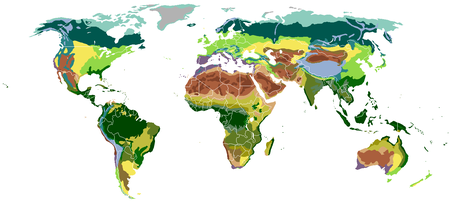
Biomes are a classification of globally similar areas, including ecosystems, such as ecological communities of plants and animals, soil organisms and climatic conditions.[citation needed] Biomes are in part defined based on factors such as plant structures (such as trees, shrubs and grasses), leaf types (such as broadleaf and needleleaf), plant spacing (forest, woodland, savanna) and climate.[citation needed] Unlike ecozones, biomes are not defined by genetic, taxonomic or historical similarities. Biomes are often identified with particular patterns of ecological succession and climax vegetation.
A fundamental classification of biomes is:
- Terrestrial (land) biomes.
- Freshwater biomes.
- Marine biomes.
Classification
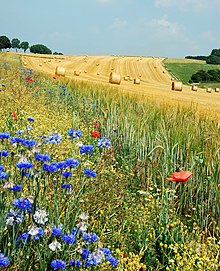


Ecosystems have become particularly important politically, since the Convention on Biological Diversity (CBD) - ratified by 192 countries - defines "the protection of ecosystems, natural habitats and the maintenance of viable populations of species in natural surroundings"[5] as a commitment of ratifying countries. This has created the political necessity to spatially identify ecosystems and somehow distinguish among them. The CBD defines an "ecosystem" as a "dynamic complex of plant, animal and micro-organism communities and their non-living environment interacting as a functional unit".
With the need of protecting ecosystems, the political need arose to describe and identify them efficiently. Vreugdenhil et al. argued that this could be achieved most effectively by using a physiognomic-ecological classification system, as ecosystems are easily recognizable in the field as well as on satellite images. They argued that the structure and seasonality of the associated vegetation, or flora, complemented with ecological data (such as elevation, humidity, and drainage), are each determining modifiers that separate partially distinct sets of species. This is true not only for plant species, but also for species of animals, fungi and bacteria. The degree of ecosystem distinction is subject to the physiognomic modifiers that can be identified on an image and/or in the field. Where necessary, specific fauna elements can be added, such as seasonal concentrations of animals and the distribution of coral reefs.
Several physiognomic-ecological classification systems are available:
- Physiognomic-Ecological Classification of Plant Formations of the Earth: a system based on the 1974 work of Mueller-Dombois and Heinz Ellenberg,[6] and developed by UNESCO. This classification "describes the above-ground or underwater vegetation structures and cover as observed in the field, described as plant life forms. This classification is fundamentally a species-independent physiognomic, hierarchical vegetation classification system which also takes into account ecological factors such as climate, elevation, human influences such as grazing, hydric regimes and survival strategies such as seasonality. The system was expanded with a basic classification for open water formations".[7]
- Land Cover Classification System (LCCS), developed by the Food and Agriculture Organization (FAO).[8]
- Forest-Range Environmental Study Ecosystems (FRES) developed by the United States Forest Service for use in the United States.[9]
Several aquatic classification systems are available, and an effort is being made by the United States Geological Survey (USGS) and the Inter-American Biodiversity Information Network (IABIN) to design a complete ecosystem classification system that will cover both terrestrial and aquatic ecosystems.
From a philosophy of science perspective, ecosystems are not discrete units of nature that simply can be identified using the most "correct" type of classification approach.[citation needed] In agreement with the definition by Tansley ("mental isolates"), any attempt to delineate or classify ecosystems should be explicit about the observer/analyst input in the classification including its normative rationale.

Ecosystem services
Ecosystem services are “fundamental life-support services upon which human civilization depends,”i and can be direct or indirect. Examples of direct ecosystem services are: pollination, wood and erosion prevention. Indirect services could be considered climate moderation, nutrient cycles and detoxifying natural substances. The services and goods an ecosystem provides are often undervalued as many of them are without market value.[10] Broad examples include:
- Regulating (climate, floods, nutrient balance, water filtration)
- Provisioning (food, medicine, fur, minerals)
- Cultural (science, spiritual, ceremonial, recreation, aesthetic)
- Supporting (nutrient cycling, photosynthesis, soil formation).[11]
Ecosystem legal rights
Ecuador's new constitution of 2008 is the first in the world to recognize legally enforceable Rights of Nature, or ecosystem rights.[12]
The borough of Tamaqua, Pennsylvania passed a law giving ecosystems legal rights. The ordinance establishes that the municipal government or any Tamaqua resident can file a lawsuit on behalf of the local ecosystem.[13] Other townships, such as Rush, followed suit and passed their own laws.[14]
This is part of a growing body of legal opinion proposing 'wild law'. Wild law, a term coined by Cormac Cullinan (a lawyer based in South Africa), would cover birds and animals, rivers and deserts.[15][16]
Function and biodiversity

From an anthropocentric point of view, some people perceive ecosystems as production units that produce goods and services, such as wood by forest ecosystems and grass for cattle by natural grasslands. Meat from wild animals, often referred to as bush meat in Africa, has proven to be extremely successful under well-controlled management schemes in South Africa and Kenya. Much less successful has been the discovery and commercialization of substances of wild organism for pharmaceutical purposes. Services derived from ecosystems are referred to as ecosystem services. They may include
- Facilitating the enjoyment of nature, which may generate many forms of income and employment in the tourism sector, often referred to as eco-tourisms,
- Water retention, thus facilitating a more evenly distributed release of water,
- Soil protection, open-air laboratory for scientific research, etc.

A greater degree of species or biological diversity - commonly referred to as Biodiversity - of an ecosystem may contribute to greater resilience of an ecosystem, because there are more species present at a location to respond to change and thus "absorb" or reduce its effects. “Some theories predict that biodiversity will promote ecosystem integrity in changing climates, because high diversity ensures that functional groups will retain at least one species able to tolerate altered condition."[17] This reduces the effect before the ecosystem's structure is fundamentally changed to a different state. One hypothesis about this is the Rivet Poper Hypothesis. According to Paul and Anne Ehrlich “the diversity of life is something like the rivets on an airplane. Each species plays a small but significant role in the working of the whole, and the loss of any rivet weakens the plane by a small but measurable amount. Pop too many rivets and the plane will crash that is, some vital function will collapse."[18] They are saying if too many species die out then some sort of vital function of the ecosystem such as a food web would collapse causing the ecosystem to fail. However rivets come in different sizes and have different critical functions in construction, when thinking about species as rivets the variety and distribution in the overall structure is important.
This is not universally the case and there is no proven relationship between the species diversity of an ecosystem and its ability to provide goods and services on a sustainable level: Humid tropical forests produce very few goods and direct services and are extremely vulnerable to change, while many temperate forests readily grow back to their previous state of development within a lifetime after felling or a forest fire. Some grasslands have been sustainably exploited for thousands of years (Mongolia, Africa, European peat and mooreland communities).
The study of ecosystems

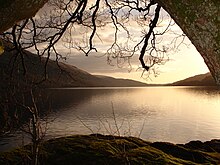
Ecosystem dynamics
Introduction of new elements, whether biotic or abiotic, into an ecosystem tend to have a disruptive effect. In some cases, this can lead to ecological collapse or "trophic cascading" and the death of many species within the ecosystem. Under this deterministic vision, the abstract notion of ecological health attempts to measure the robustness and recovery capacity for an ecosystem; i.e. how far the ecosystem is away from its steady state.
Often, however, ecosystems have the ability to rebound from a disruptive agent. The difference between collapse or a gentle rebound is determined by two factors—the toxicity of the introduced element and the resiliency of the original ecosystem.
Ecosystems are primarily governed by stochastic (chance) events, the reactions these events provoke on non-living materials and the responses by organisms to the conditions surrounding them. Thus, an ecosystem results from the sum of individual responses of organisms to stimuli from elements in the environment.The presence or absence of populations merely depends on reproductive and dispersal success, and population levels fluctuate in response to stochastic events. As the number of species in an ecosystem is higher, the number of stimuli is also higher. Since the beginning of life organisms have survived continuous change through natural selection of successful feeding, reproductive and dispersal behavior. Through natural selection the planet's species have continuously adapted to change through variation in their biological composition and distribution. Mathematically it can be demonstrated that greater numbers of different interacting factors tend to dampen fluctuations in each of the individual factors.
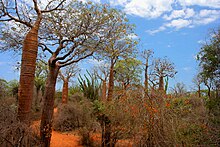
Given the great diversity among organisms on earth, most ecosystems only changed very gradually, as some species would disappear while others would move in. Locally, sub-populations continuously go extinct, to be replaced later through dispersal of other sub-populations. Stochastists do recognize that certain intrinsic regulating mechanisms occur in nature. Feedback and response mechanisms at the species level regulate population levels, most notably through territorial behaviour. Andrewatha and Birch[20] suggest that territorial behaviour tends to keep populations at levels where food supply is not a limiting factor. Hence, stochastists see territorial behaviour as a regulatory mechanism at the species level but not at the ecosystem level. Thus, in their vision, ecosystems are not regulated by feedback and response mechanisms from the ecosystem itself and there is no such thing as a balance of nature.
If ecosystems are governed primarily by stochastic processes, through which its subsequent state would be determined by both predictable and random actions, they may be more resilient to sudden change than each species individually. In the absence of a balance of nature, the species composition of ecosystems would undergo shifts that would depend on the nature of the change, but entire ecological collapse would probably be infrequent events.
The theoretical ecologist Robert Ulanowicz has used information theory tools to describe the structure of ecosystems, emphasizing mutual information (correlations) in studied systems. Drawing on this methodology and prior observations of complex ecosystems, Ulanowicz depicts approaches to determining the stress levels on ecosystems and predicting system reactions to defined types of alteration in their settings (such as increased or reduced energy flow, and eutrophication.[21]

In addition, Eric Sanderson has developed the Muir web, based on experience on the Mannahatta project. This graphical schematic shows how different species are connected to each other, not only regarding their position in the food chain, but also regarding other services, i.e. provisioning of shelter, ...[22][23]
- See also: Relational order theories, as to fundamentals of life organization
Ecosystem ecology
Ecosystem ecology is the integrated study of biotic and abiotic components of ecosystems and their interactions within an ecosystem framework. This science examines how ecosystems work and relates this to their components such as chemicals, bedrock, soil, plants, and animals. Ecosystem ecology examines physical and biological structure and examines how these ecosystem characteristics interact.
See also
- Biodiversity
- Biodiversity Action Plan
- Biogeochemical cycle
- Biocoenosis
- Biome
- Biosphere
- Biosphere 2
- Business ecosystem
- Carbon sequestration in terrestrial ecosystems
- Close to nature forestry
- Complex system
- Earth Science
- Ecological economics
- Ecological yield
- Ecology
- Ecoregion
- Ecosystem diversity
- Ecosystem ecology
- Ecosystem engineer
- Ecosystem management
- Ecosystem model
- Ecosystem services
- Ecosystem valuation
- Ecotope
- Edge effect
- Eugene Odum
- Food chain
- Global warming
- Invasive species
- Landscape ecology
- Leopold Report
- Natural environment
- Natural landscape
- Natural resource
- Nature
- Push–pull technology
- Software ecosystem
- Spaceship Earth
- Sustainability
- Sustainable development
References
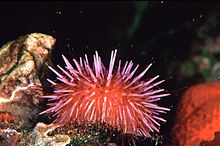

- ^ ”Biology Concepts & Connections Sixth Edition”, Campbell, Neil A. (2009), page 2, 3 and G-9. Retrieved 2010-06-14.
- ^ Odum, EP (1971) Fundamentals of ecology, third edition, Saunders New York
- ^ a b Tansley, AG (1935). "The use and abuse of vegetational terms and concepts". Ecology. 16 (3): 284–307. doi:10.2307/1930070. JSTOR 1930070.
- ^ Tansley, AG (1939) The British islands and their vegetation. Volume 1 of 2. Cambridge University Press, United. Kingdom. 484 pg.
- ^ United Nations Environment Programme. Convention on Biological Diversity. June 1992. UNEP Document no. Na.92-78. Reprint
- ^ Möller-Dombois & Ellenberg: "A Tentative Physiognomic-Ecological Classification of Plant Formations of the Earth".
- ^ Map of the ecosystems of Central America, WICE 2005. Retrieved 30 August 2008.
- ^ Antonio Di Gregorio & Louisa J.M. Jansen (2007). Land Cover Classification System (LCCS): Classification Concepts and User Manual. Retrieved 30 August 2008.
- ^ Garrison, George A.; Bjugstad, A. J.; Duck, D. A.; Lewis, M. E.; and Smith, D. R. (1977) Vegetation and environmental features of forest and range ecosystems (Forest Service Handbook Number 465) United States Department of Agriculture, Washington, D.C., OCLC 3359594 worldcat.org
- ^ Costanza, R.; d'Arge, R.; de Groot, R.; Farber, S.; Grasso, M.; Hannon, B.; Naeem, Shahid; O'Neill, Robert V.; et al. (1997). "The value of the world's ecosystem services and natural capital" (PDF). Nature. 387 (6630): 253–260. doi:10.1038/387253a0.
{{cite journal}}: Explicit use of et al. in:|last7=(help) - ^ Millennium Ecosystem Assessment, 2005. Ecosystems and Human Well-being: Biodiversity Synthesis. World Resources Institute, Washington, DC. [1]
- ^ The Community Environmental Legal Defense Fund: about the New Constitution 2008 The Community Environmental Legal Defense Fund, Retrieved 2009-09-07
- ^ Tamaqua Law Recognizes Rights of Nature
- ^ Rush Township Strips Sludge Corporation "Rights"
- ^ On Thin Ice
- ^ Earthly rights
- ^ Owen L. Petchey, [2], Proquest Research Library, Nov 4th 1999
- ^ Yvonne Baskin,[3], “Proquest Research Library”, Nov 1994
- ^ Adams, C.E. (1994). "The fish community of Loch Lomond, Scotland : its history and rapidly changing status". Hydrobiologia. 290 (1–3): 91–102. doi:10.1007/BF00008956.
- ^ Andrewatha, HG and LC Birch (1954) The distribution and abundance of animals. University of Chicago Press, Chicago, IL
- ^ Robert Ulanowicz (1997). Ecology, the Ascendant Perspective. Columbia Univ. Press. ISBN 0-23-110828-1.
- ^ Muir web
- ^ Muir web definition
Further reading
- Boer, P.J. den, and J. Reddingius. 1996. Regulation and stabilization paradigms in population ecology. Population and Community Biology Series 16. Chapman and Hall, New York. 397 pg.
- Dame R., Olenin S. 2005. The Comparative Roles of Suspension-Feeders in Ecosystems. Springer. Dordrecht. 360 p.
- Ecological Society of America, Ecosystem Services, 25 May 2007
- Ehrlich, Paul; Walker, Brian “Rivets and Redundancy”.BioScience.vol.48.no.5. May 1998. pp. 387. American Institute of Biological Sciences.
- Grime, J.P. "Biodiversity and Ecosystem Function: The Debate Deepens." Science Vol. 277. no. 533029 August 1997 pp. 1260–1261. 25 May 2007
- Groom, Martha J., and Gary K. Meffe. Principles of Conservation Biology. 3. Sunderland, MA: Sinauer Associates, Inc, 2006.
- Lawton, John H., What Do Species Do in Ecosystems?, Oikos, December, 1994. vol.71, no.3.
- Lindeman, R.L. 1942. The trophic-dynamic aspect of ecology. Ecology '23': 399-418.
- Patten, B.C. 1959. An Introduction to the Cybernetics of the Ecosystem: The Trophic-Dynamic Aspect. Ecology 40, no. 2.: 221-231.
- Ranganathan, J and Irwin, F. (2007, May 7). Restoring Nature's Capital: An Action Agenda to Sustain Ecosystem Services
- Vreugdenhil, D., Terborgh, J., Cleef, A.M., Sinitsyn, M., Boere, G.C., Archaga, V.L., Prins, H.H.T., 2003, Comprehensive Protected Areas System Composition and Monitoring, IUCN, Gland, Switzerland. 106 pg.
External links
- The Economics of Natural and Manmade hazards to Ecosystems (NOAA)
- The Ecosystem (Spanish language)
- Bering Sea Climate and Ecosystem (Current status)
- Arctic Climate and Ecosystem (Current status)
- Millennium Ecosystem Assessment (2005)
- Teaching about Ecosystems
- The State of the Nation's Ecosystems (U.S.)
- Ecological Society of America
- Ecotron - An Ecological research project studying ecosystems and organisms in the context of environmental changes
- Texas A&M University - Dept. of Ecosystem Science and Management
- Texas AgriLife Extension - Dept. of Ecosystem Science and Management
- BBC article on Charles Darwin's and Joseph Hooker's artificial ecosystem on Ascension Island
- How the 'ecosystem' myth has been used for sinister means, The Observer
